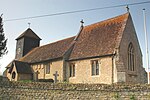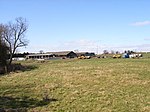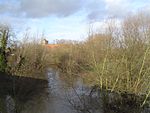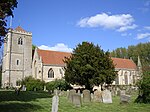Aston Martin Heritage Trust Museum
1998 establishments in EnglandAston MartinAutomobile museums in EnglandAutomobile stubsBarns in England ... and 5 more
History museums in OxfordshireMuseums established in 2002Organizations established in 1998United Kingdom museum stubsUse British English from February 2023
The Aston Martin Heritage Trust (AMHT) is a Charitable Incorporated Organisation that manages the Aston Martin Museum an automobile museum presenting the history of Aston Martin cars. It is located off Dorchester Road in the village of Drayton St Leonard, South Oxfordshire, England. The AMHT was founded in 1998 and the Museum opened in 2002. It is housed in a 15th-century barn, built by the monks of Dorchester Abbey. The collection ranges from the oldest surviving Aston Martin car, No. 3 to a Vanquish Volante pre-production model dating from 2013.
Excerpt from the Wikipedia article Aston Martin Heritage Trust Museum (License: CC BY-SA 3.0, Authors).Aston Martin Heritage Trust Museum
South Oxfordshire
Geographical coordinates (GPS) Address Nearby Places Show on map
Geographical coordinates (GPS)
| Latitude | Longitude |
|---|---|
| N 51.66 ° | E -1.13723 ° |
Address
OX10 7BG South Oxfordshire
England, United Kingdom
Open on Google Maps











